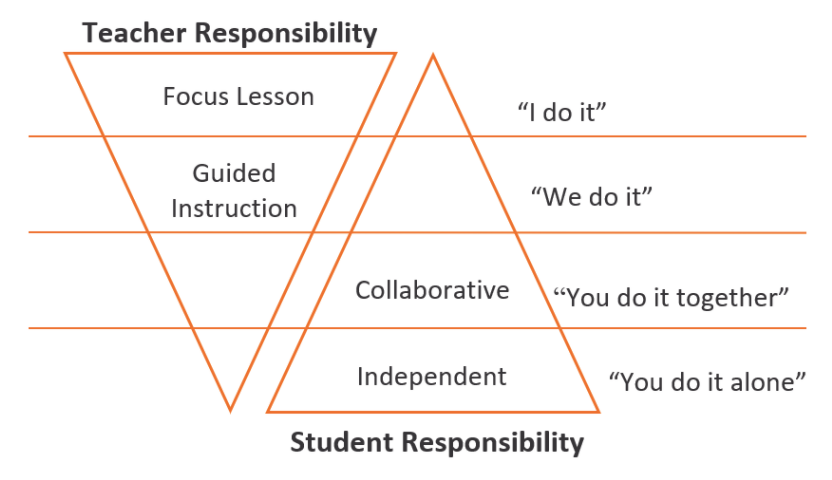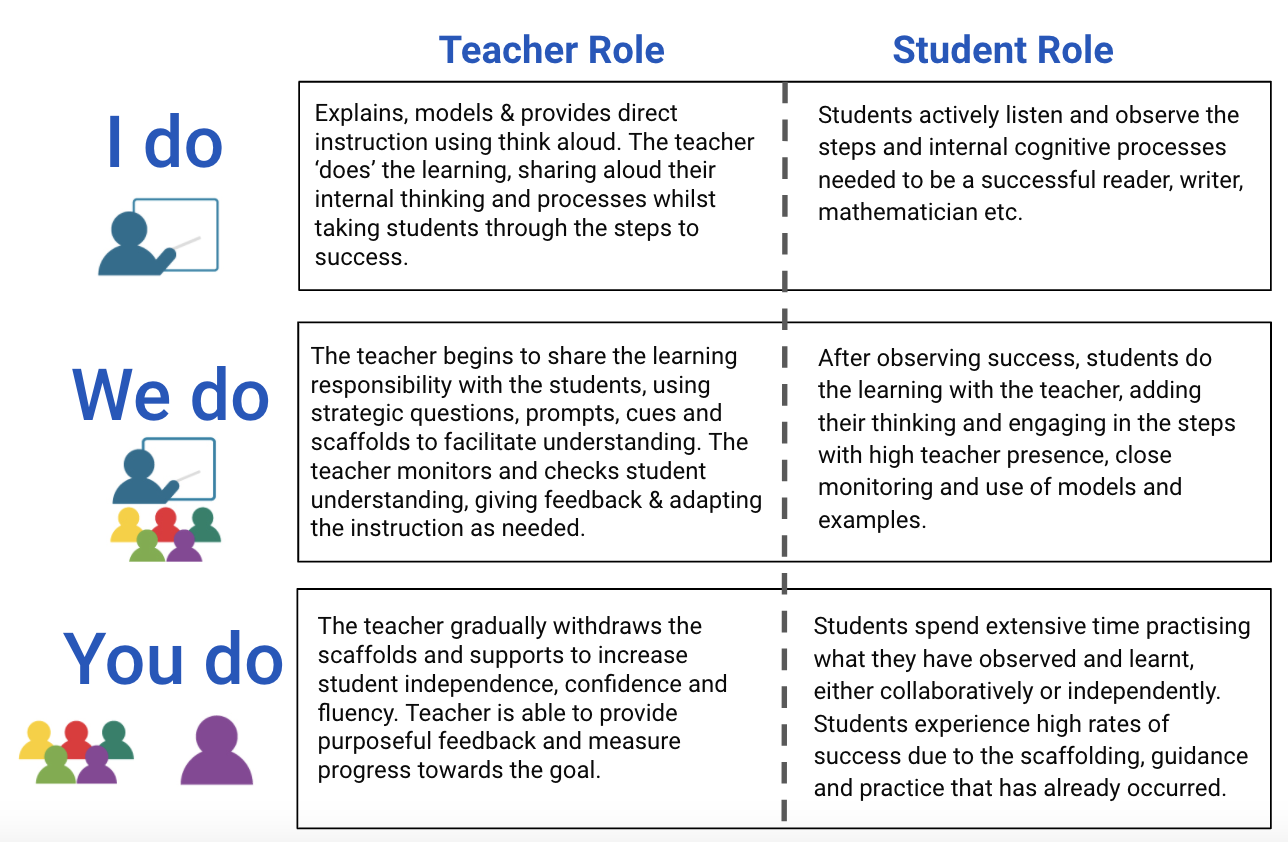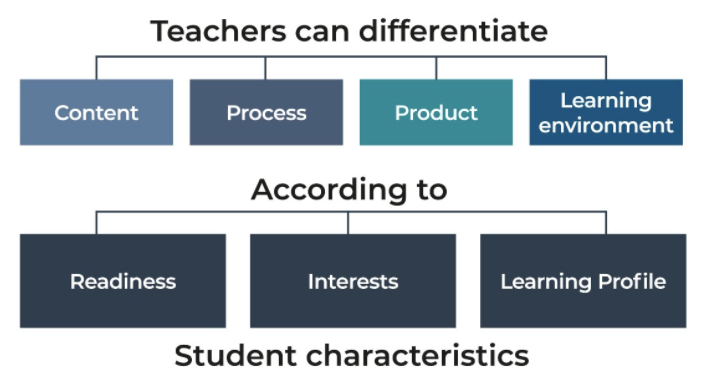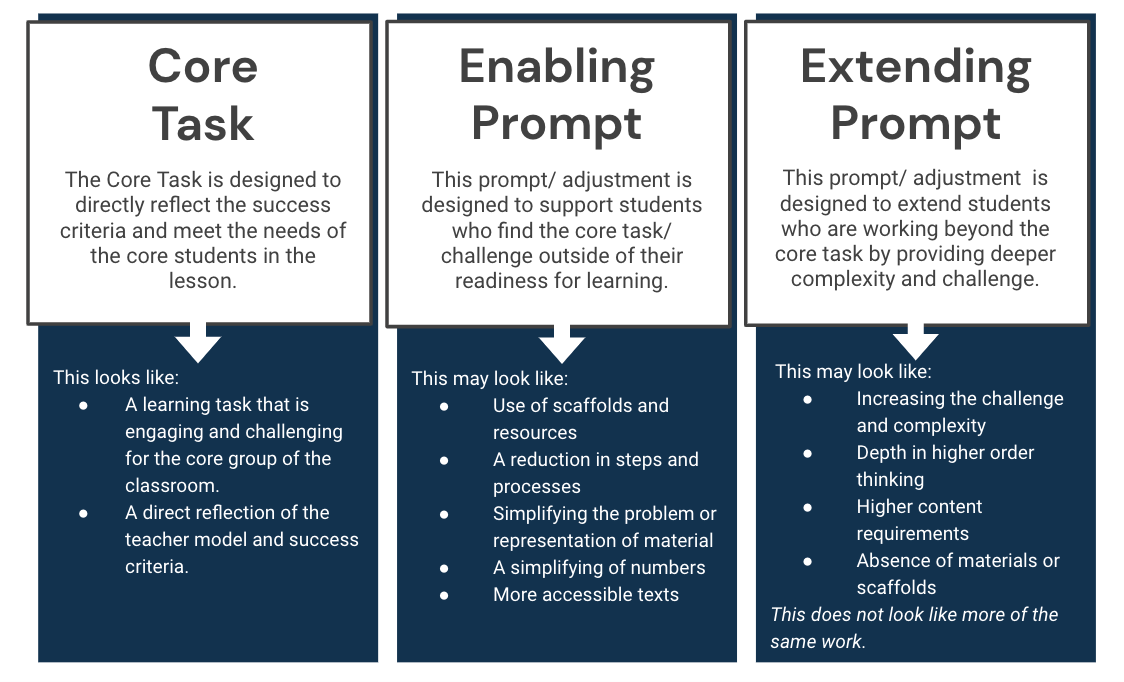Teacher - I Do, We Do, You Do
Student - Show Me, Help Me, Let Me
The Gradual Release of Responsibility is an instructional strategy characterised by a sequence of learning that shifts the learning responsibility from the teacher to the student. The goal of this approach is autonomy and efficacy on the part of the student–ideally, the ability to transfer understanding on their own. This gradual release may occur within a lesson, over multiple lessons, a week, or longer. Students may–and often will need to–move back and forth between levels as they develop proficiency around a skill or concept.


Differentiation at Aberfeldie refers to the responses that teachers make to learners’ needs. These responses extend the knowledge and skills of every student in every class, regardless of their starting point. ‘What’ and ‘how’ teachers differentiate depends on the needs of the students in the class at any one time. The below diagram outlines how teachers differentiate at Aberfeldie Primary School.

With the use of Learning Intentions in the Instructional Model, the essential aspect of differentiation to attend to, is each student's readiness towards that goal. In most classrooms, whatever the learning intention, it is likely to be too demanding for some students and too easy for others unless the teacher addresses the readiness of the classroom. This is developed and documented through a tiered response, encompassing the core task with enabling and extending prompts to allow all students to access challenging and relevant learning. It is not the quantity but the quality of the task that should serve to extend children’s learning.
